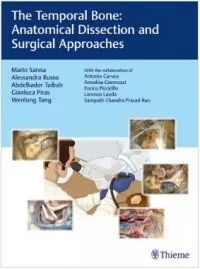Olfactometry
The olfactometry is a sensory diagnostic test capable of evaluating the ability to perceive odors using various odorous substances.
This test, performed by a specialist in Otolaryngology, is used when analteration in the sense ofsmell.
Alterations or loss of smell can occur in patients of different age groups, with various conditions and problems (rhinosinusitis, traumatic, nervous).
The aim is to obtain an evaluation of the olfactory capacity: olfactometric tests are subjective because they are based on the responses given by the patient.
Olfactory stimulus and odorous stimulus allow the evaluation of the ability to perceive odors.
During the test, areas of the central nervous system responsible for memory are activated, allowing the identification and discrimination of various odors encountered throughout life.
Areas of the Central Nervous System responsible for processing the taste stimulus are also activated.
Smell and taste are often correlated: the same patient may report olfactory and gustatory problems.
The olfactory function can undergo qualitative and quantitative changes.
The anamnesis will aim to identify sometimes chronic causes underlying an alteration of smell (neurodegenerative diseases, Alzheimer’s disease, Parkinson’s disease, congenital or rhinosinusitis conditions, presence of nasal polyps, turbinate hypertrophy, allergy conditions). Questionnaires will be administered to the patient to evaluate the alteration of smell in its entirety, investigating: onset mode, duration of the alteration of smell, variation during the day, and the impact this alteration has on the patient’s quality of life.
It will be important to perform a detailed objective examination and conduct a nasal endoscopy to highlight any mechanical causes responsible for an alteration of smell (nasal polyps, turbinate hypertrophy, nasal stenosis).
If the first-level tests are positive, second-level tests (Sniff test) will be important.
These allow quantification of the alteration of smell through an identification test (recognizing various odors), a discrimination test (how they are perceived), threshold test (the patient is asked if they can detect different concentrations of odors). A score is assigned to the patient to evaluate whether there is a condition of normosmia or hyposmia (mild, moderate, or severe).
SECOND-LEVEL TESTS
A rinomanometry can be performed, a nasal respiratory function test that will allow the study of different respiratory functions and thus evaluate potential alterations.
Other tests that can be performed: cytology and screen pin test that allow the search for possible cellular pathologies related to olfactory alteration.
If the second-level tests are also positive, it is mandatory to perform a CT scan of the maxillofacial area and a brain MRI with contrast medium to search for any pathologies responsible for processing the olfactory stimulus or anything that may contribute to the condition of hyposmia.
THERAPY
Once the cause of hyposmia is identified, it is important to reach an appropriate therapy.
- mechanical cause: surgical therapy (nasal polyposis, allergic conditions causing turbinate hypertrophy) such as: FESS surgery (cleaning of the paranasal sinuses) and removal of polyps;
- viral cause: the COVID-19 pandemic has indeed shown how the alteration of smell has been one of the most impactful symptoms (olfactory training is recommended to recover a portion of olfactory functionality in a modulated manner).
Patient Preparation
It is recommended that the patient bring any previous tonal audiometry test.
Doctors
Dott.ssa Vittoria Di Rubbo
Otorinolaringoiatria, Otologia, Chirurgia della Base Cranica, Neurotologia e Chirurgia Endoscopica dei Seni Paranasali
News
Cochlear implant: when and what it is used for
Rely on a Health Center of Excellence for cochlear implant surgery is crucial for the patient, who will be guided through the multidisciplinary rehabilitation pathway for effective hearing recovery.
The Temporal Bone: Anatomical Dissection and Surgical Approaches
Temporal bone anatomy is arguably the most complex
NATIONAL & INTERNATIONAL TRAINING PROGRAMMES
NATIONAL & INTERNATIONAL TRAINING PROGRAMMES Practical Courses in Middle
Microsurgical Management of Middle Ear and Petrous Bone Cholesteatoma
The cholesteatoma, strictly speaking a cyst and not
contacts
Via Morigi, 41
29122, Piacenza (PC)
Tel. (+39) 0523.754362
WhatsApp – (+39) 378.3025085
contacts
Via Morigi, 41
29122, Piacenza (PC)
Tel. (+39) 0523.751280
WhatsApp – 389.2625175
ufficio.privati@casadicura.pc.it











